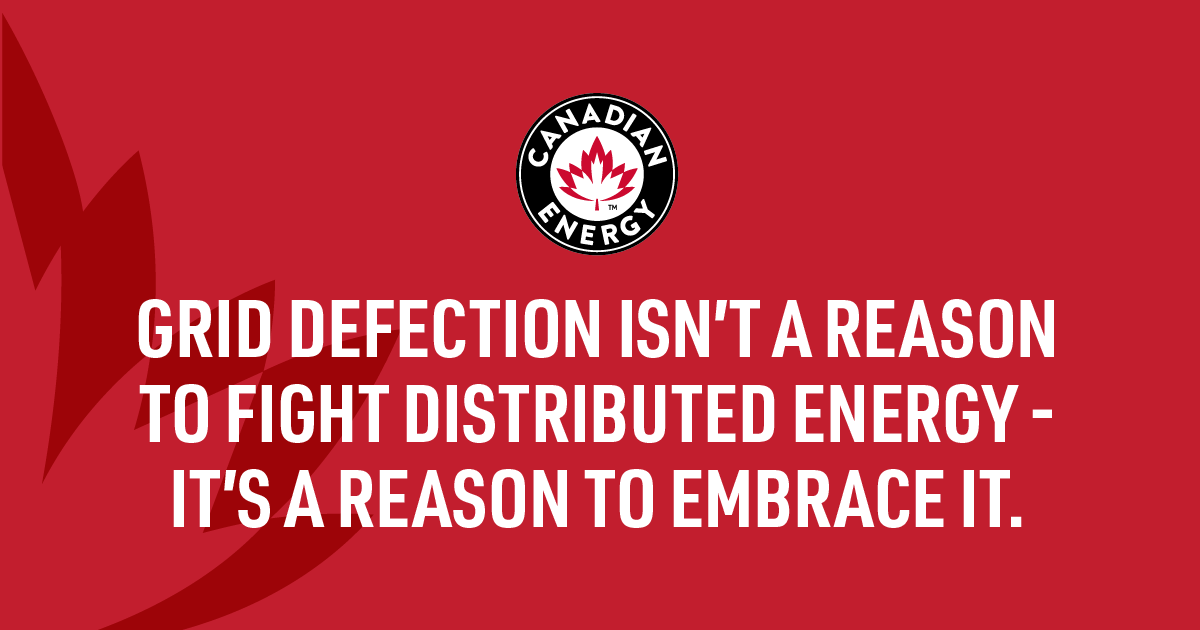Grid Defection Isn’t a Reason to Fight Distributed Energy—It’s a Reason to Embrace It

With solar exploding in growth around the U.S., conventional power plants are starting to get pushed out of the market. That could result in $2 billion in lost revenues for power providers in the next few years. The grave situation faced by German utilities may finally be playing out in America.
Utilities won’t just be losing revenues from stranded generation -- some predict they may lose their customers to grid defection as well. According to a 2015 analysis from the Rocky Mountain Institute, CohnReznick and Homer Energy, electricity sales in the Northeast could drop by nearly $39 billion by 2030 due to the proliferation of rooftop solar and distributed storage.
But is the future as grim as these statistics suggest?
If the evolving conversation around grid defection in the U.S. is any indication, the answer is “no.” Increasingly, distributed energy resources are seen as an opportunity -- not just a threat.
This is evident in the grid planning space, where distributed generation is making it easier to shift capital investments away from traditional generation and toward assets with better long-term return potential.
“Growth in distributed energy resources is an upside for distribution utilities in deregulated states, since their regulated utility business model hinges upon transmission and distribution infrastructure,” said Matt Mooren, an energy and utility expert at PA Consulting.
By embracing distributed resources as supplements to traditional infrastructure -- for example, aggregating distributed battery storage in order to defer a substation investment -- utilities have a broad range of new investment opportunities.
“The conversation on grid defection woke utilities up to the understanding that the way they have been doing resource planning is not working,” said Steve Propper, director of GTM Research’s grid edge practice.
Traditional planning, which just meant building more power plants and expanding transmission and distribution to accommodate them, is starting to break down in a world where customer-sited generation can compete with traditional resources.
When the concept of grid defection first gained prominence in the U.S. in 2014, it sparked fears about consumers leaving the grid en masse. But over the years, those fears have been tempered. It’s very unlikely that utility customers will set out on their own -- and if they do, it will be very expensive.
“Customers want to know: What would it take to achieve 99.999 percent reliability? Because 99 percent reliability means that for 87.6 hours per year, you have no power,” said Mooren. “Achieving that last few percent is very capital-intensive.”
Recognizing this reality, the Rocky Mountain Institute issued a new report in 2015 on load defection. Rather than worrying about customers completely defecting from the grid, utilities should worry about customers shedding their consumption, concluded the organization.
While RMI modeled tens of billions of dollars in potential losses from load defection, it did identify an opportunity: “Even when customers obtain much of their power from non-utility sources, they still typically stay connected to the grid and continue to rely on the utility grid for power delivery and other services. This represents emerging potential in grid services.”
Vertically integrated utilities need to grapple with the situation as soon as possible, said Mooren. “Load defection can become a risk if they lose their generation investment and don’t position themselves for grid investment.”
Utilities that get more involved with deploying distributed resources in strategic locations are finding they can enhance reliability while cutting costs -- resulting in long-term value for customers. For example, the New York utility Con Edison recently got approval to procure 52 megawatts of demand-side resources (efficiency, demand response and storage) in order to defer the build-out of new grid infrastructure for seven years. That project could save the utility $40 million.
In states with high distributed energy penetration -- California, New York, Hawaii and Arizona -- regulators are experimenting with new ways to allow utilities to offer solar, batteries and demand-reduction measures.
In Arizona, regulators approved pilot programs by Tucson Electric Power and Arizona Public Service (APS) to install rooftop solar. As part of that process, APS has been studying how to better accommodate more DERs on its network.
In Minnesota, the e21 Initiative (a cooperative effort between utilities, research organizations, and other stakeholders) is mapping out how that state can transition to an updated regulatory model that will, among other goals, “recognize and fairly value grid services and DER services.”
New York regulators are doing the most to accommodate this transition through its Reforming the Energy Vision initiative. By turning utilities into “distribution system platform providers,” regulators hope to pre-empt load defection and allow traditional electricity companies to make money by brokering distributed resources. The details in New York are still being worked out, but the state is well ahead of any other in realizing this progressive vision.
If grid defection ever does become an issue, it wouldn’t just be a financial catastrophe for utilities -- it would be a problem for customers.
“Policies that encourage grid defection may lead to a Balkanized grid in which thousands of customers simply generate and consume their own power, with increasing unit costs for any energy served by the existing grid. In the long run, grid defection is likely bad for everyone,” observed RMI’s Chris Nelder and Mark Dyson in a recent analysis.
Even if the extreme version of this scenario is unlikely in the short term, an increasing number of regulators and utilities recognize that distributed resources must be viewed as a financial opportunity.
“Today, utilities are less worried about grid defection, and more worried about integrating distributed generation in ways that make them money,” said Propper.
***
This article is part of a Next Generation Utility series from PA Consulting. Find more news and analysis on the subject here.
